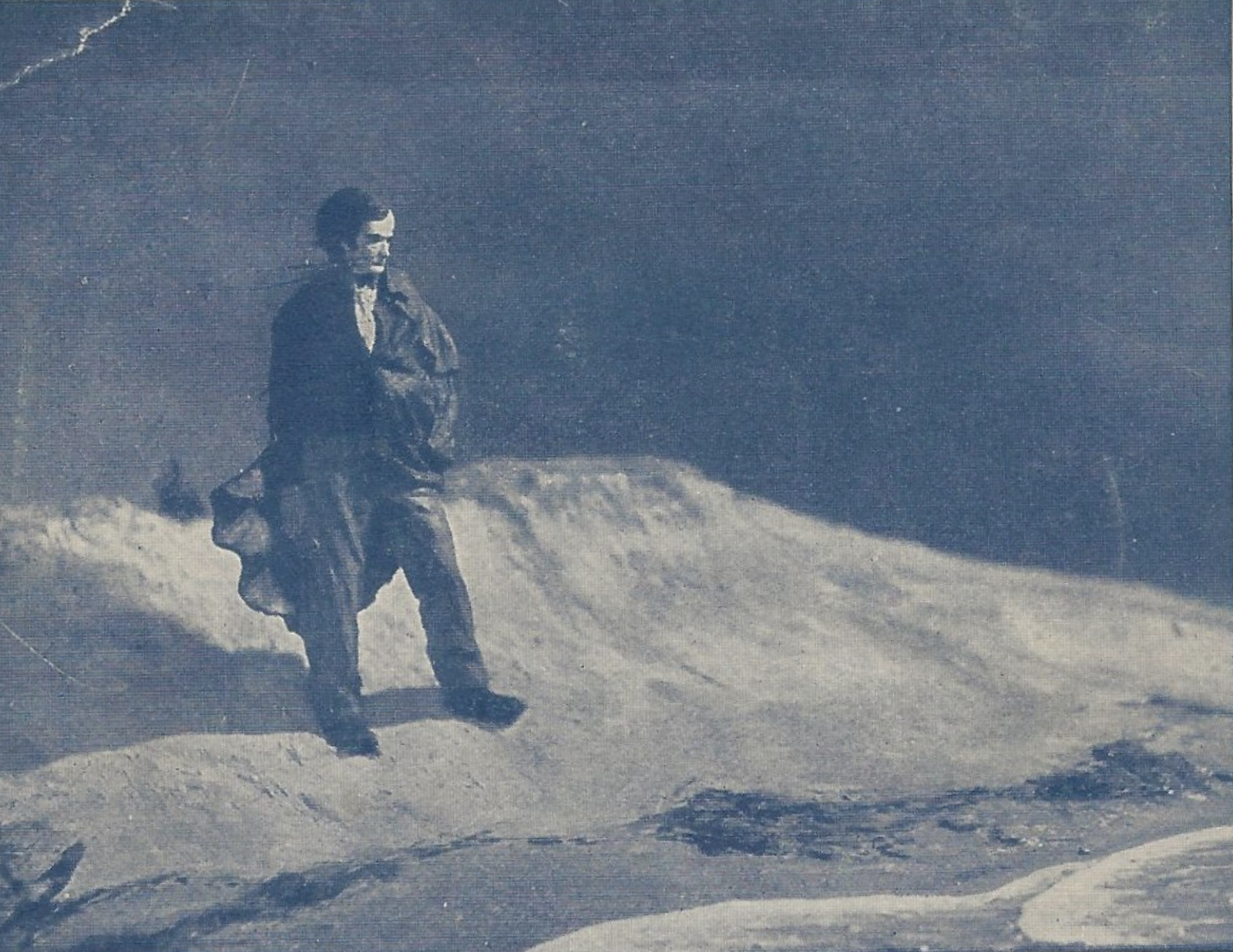The Holy Dream
Edgar Allan Poe’s “A Dream” (1827) echoes the same sentiments as “A Dream Within A Dream” (1849), written almost a quarter century later. I have written previously that “A Dream Within A Dream” denotes a happy dream (the past) wrapped up in a miserable dream (the present). That poem and the other poem considered here juxtapose a vivid happiness recalled through dreams, against a present-day reality so jaded and faded that it resembles a dream state.
Both poles recur often in Poe’s poetry. The dream past is recalled in poems such as “Dreams” (1827) (“I have been happy, tho’ in a dream/I have been happy—and I love the theme”) and “Annabel Lee” (1849) (“For the moon never beams without bringing me dreams/Of the beautiful Annabel Lee”). The sleepwalking present is evidenced in “To One in Paradise” (1833) (“And all my days are trances”) and “Ulalume” (1847) (“I replied—'This is nothing but dreaming’.”) Dreams are a hot topic in Poe’s oeuvre.
In “A Dream,” the poem we concern ourselves with today, Poe exalts a dream of past happiness recalled, and laments a dream-like trance reality of rejection from the world and disappointment in the world. The juxtaposition is complete, and how apart Poe holds the two notions is made clear in the words he uses to describe them: the present is just a “Waking Dream,” but the past is a “Holy Dream.” He is so solid in his conviction that he says it twice: “That holy dream, that holy dream...”
That phrase is instructive and warrants some comment. In the Bible, dreams are often bear instruction or direction from God, like when God tells Jacob to return to the land of his father (Genesis 31:10-11) or when God’s angel tells Joseph in a dream to escape to Egypt with Jesus and Mary (Matthew 2:13-23). Thus, a “Holy Dream” is one that conveys a sacred content, a message to be cherished and guarded. Nothing could be “more purely bright,” says Poe. A “Holy Dream” also sustains the devotee and helps him to defy persecution (or at least stinging criticism): “While all the world were chiding.”
The spiritual nerve is struck from the poem’s opening lines. “In visions of the dark night,” Poe begins, “I have dreamed of joy departed.” In a famous 16th century poem, the Spanish poet and mystic John of the Cross wrote about the “Dark Night of the Soul,” which deals with abnegation of earthly delights and separation from worldly joy in order to fully encounter God. Poe’s “Dark Night” visions are of joy departed. With happiness removed, reality is now “a waking dream of life and light” which paradoxically denotes pure misery. Yet, this misery is the vessel for the “purely bright” vision of almost divine light, which is that enduring and incorruptible ideal which endures even within a corrupted reality.
There is another descriptor Poe uses to speak about the dream past: he talks about “a ray”, and “a lovely beam,” which brings to mind a laser, or some other very precise streak of light projected from a certain point that keeps him on target, and prevents him from going off course. Thus, the distraction of the present is minimal; he is like a Star Trek character who goes into the ship’s holodeck, but has no trouble remembering that the things around him are all make believe and not to be given any credulity. His true reality and pole star are elsewhere. It is as if, like a projection room, a window open to the past, provides him a guiding beam of light he follows through the darkness and the fog.
At four short stanzas, Poe’s “A Dream” packs a wallop. It is even the more impressive that Poe was only eighteen when he published it, and that it matches the message of the more famous “A Dream Within A Dream,” which Poe wrote when he was more mature at forty years old.





Comments
Post a Comment